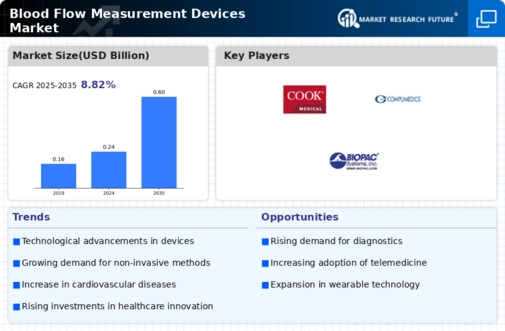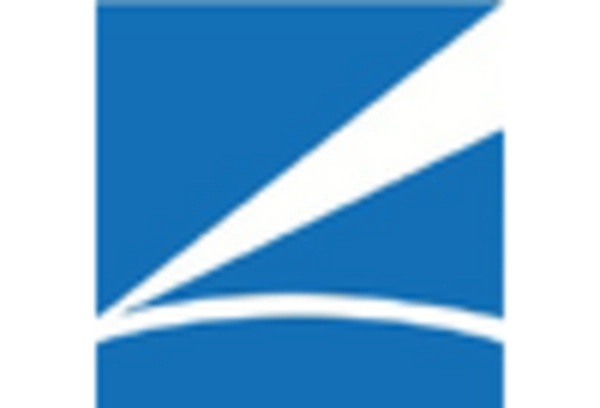-
Report Prologue
-
Market Introduction
-
Definition
-
Scope Of The Study
- Research Objective
- Assumptions
- Limitations
-
Research Methodology
-
Introduction
-
Primary Research
-
Secondary Research
-
Market Size Estimation
-
Market Dynamics
-
Drivers
-
Restraints
-
Opportunities
-
Challenges
-
Macroeconomic Indicators
-
Technology Trends & Assessment
-
Market Factor Analysis
-
Porter’s Five Forces Analysis
- Bargaining Power Of Suppliers
- Bargaining Power Of Buyers
- Threat Of New Entrants
- Threat Of Substitutes
- Intensity Of Rivalry
-
Value Chain Analysis
-
Investment Feasibility Analysis
-
Pricing Analysis
-
Global Blood Flow Measurement Devices Market, By Product
-
Introduction
-
Ultrasound
- Ultrasound Doppler
- Transit-Time Flow Meters
- Digital Doppler
- Bilateral Doppler
- Multi Range-Doppler Technology
- Market Estimates & Forecast, 2023-2030
-
Laser Doppler Blood Flow Meters
- Market Estimates & Forecast, 2023-2030
-
Electromagnetic Blood Flow Meters
- Market Estimates & Forecast, 2023-2030
-
Global Blood Flow Measurement Devices Market, By Application
-
Introduction
-
Cardiovascular Disease
- Market Estimates & Forecast, 2023-2030
-
Diabetes
- Market Estimates & Forecast, 2023-2030
-
Gastroenterology
- Market Estimates & Forecast, 2023-2030
-
Tumor Monitoring
- Market Estimates & Forecast, 2023-2030
-
CABG
- Market Estimates & Forecast, 2023-2030
-
Microvascular Surgery
- Market Estimates & Forecast, 2023-2030
-
Others
- Market Estimates & Forecast, 2023-2030
-
Global Blood Flow Measurement Devices Market, By End-User
-
Introduction
-
Hospitals & Clinics
- Market Estimates & Forecast, 2023-2030
-
Specialty Centers
- Market Estimates & Forecast, 2023-2030
-
Ambulatory Surgical Centers
- Market Estimates & Forecast, 2023-2030
-
Global Blood Flow Measurement Devices Market, By Region
-
Introduction
-
Americas
- North America
- South America
-
Europe
- Western Europe
- Eastern Europe
-
Asia Pacific
- Japan
- China
- India
- Australia
- Republic Of Korea
- Rest Of Asia Pacific
-
The Middle East & Africa
- United Arab Emirates
- Saudi Arabia
- Oman
- Kuwait
- Qatar
- Rest Of The Middle East & Africa
-
Company Landscape
-
Introduction
-
Market Share Analysis
-
Key Development & Strategies
- Key Developments
-
Company Profiles
-
Medistim ASA
- Company Overview
- Product Overview
- Financials
- SWOT Analysis
-
Cook Medical, Inc.
- Company Overview
- Product Overview
- Financial Overview
- Key Developments
- SWOT Analysis
-
Getinge Group
- Company Overview
- Product Overview
- Financial Overview
- Key Development
- SWOT Analysis
-
Deltex Medical Group PLC
- Company Overview
- Product/Business Segment Overview
- Financial Overview
- Key Development
- SWOT Analysis
-
Transonic Systems, Inc.
- Company Overview
- Product Overview
- Financial Overview
- Key Developments
-
Compumedics Limited
- Company Overview
- Product Overview
- Financial Overview
- Key Developments
-
Biopac Systems Inc.
- Overview
- Product Overview
- Financials
- Key Developments
- SWOT Analysis
-
Others
-
MRFR Conclusion
-
Key Findings
- From CEO’s View Point
- Unmet Needs Of The Market
-
Key Companies To Watch
-
Prediction Of The Pharmaceutical Industry
-
Appendix
-
LIST OF TABLES
-
Blood Flow Measurement Devices Industry Synopsis, 2023-2030
-
Global Blood Flow Measurement Devices Market Estimates & Forecast, 2023-2030, (USD Million)
-
Global Blood Flow Measurement Devices Market, By Region, 2023-2030, (USD Million)
-
Global Blood Flow Measurement Devices Market, By Product, 2023-2030, (USD Million)
-
Global Blood Flow Measurement Devices Market, By Application, 2023-2030, (USD Million)
-
Global Blood Flow Measurement Devices Market, By End-User, 2023-2030, (USD Million)
-
North America Blood Flow Measurement Devices Market, By Product, 2023-2030, (USD Million)
-
North America Blood Flow Measurement Devices Market, By Application, 2023-2030, (USD Million)
-
North America Blood Flow Measurement Devices Market, By End-User, 2023-2030, (USD Million)
-
U.S. Blood Flow Measurement Devices Market, By Product, 2023-2030, (USD Million)
-
U.S. Blood Flow Measurement Devices Market, By Application, 2023-2030, (USD Million)
-
U.S. Blood Flow Measurement Devices Market, By End-User, 2023-2030, (USD Million)
-
Canada Blood Flow Measurement Devices Market, By Product, 2023-2030, (USD Million)
-
Canada Blood Flow Measurement Devices Market, By Application, 2023-2030, (USD Million)
-
Canada Blood Flow Measurement Devices Market, By End-User, 2023-2030, (USD Million)
-
South America Blood Flow Measurement Devices Market, By Product, 2023-2030, (USD Million)
-
South America Blood Flow Measurement Devices Market, By Application, 2023-2030, (USD Million)
-
South America Blood Flow Measurement Devices Market, By End-User, 2023-2030, (USD Million)
-
Europe Blood Flow Measurement Devices Market, By Product, 2023-2030, (USD Million)
-
Europe Blood Flow Measurement Devices Market, By Application, 2023-2030, (USD Million)
-
Europe Blood Flow Measurement Devices Market, By End-User, 2023-2030, (USD Million)
-
Western Europe Blood Flow Measurement Devices Market, By Product, 2023-2030, (USD Million)
-
Western Europe Blood Flow Measurement Devices Market, By Application, 2023-2030, (USD Million)
-
Western Europe Blood Flow Measurement Devices Market, By End-User, 2023-2030, (USD Million)
-
Eastern Europe Blood Flow Measurement Devices Market, By Product, 2023-2030, (USD Million)
-
Eastern Europe Blood Flow Measurement Devices Market, By Application, 2023-2030, (USD Million)
-
Eastern Europe Blood Flow Measurement Devices Market, By End-User, 2023-2030, (USD Million)
-
Asia Pacific Blood Flow Measurement Devices Market, By Product, 2023-2030, (USD Million)
-
Asia Pacific Blood Flow Measurement Devices Market, By Application, 2023-2030, (USD Million)
-
Asia Pacific Blood Flow Measurement Devices Market, By End-User, 2023-2030, (USD Million)
-
The Middle East & Africa Blood Flow Measurement Devices Market, By Product, 2023-2030, (USD Million)
-
The Middle East & Africa Blood Flow Measurement Devices Market, By Diagnoses, 2023-2030, (USD Million)
-
The Middle East & Africa Blood Flow Measurement Devices Market, By End-User, 2023-2030, (USD Million)
-
-
LIST OF FIGURES
-
Research Process
-
Segmentation For The Global Blood Flow Measurement Devices Market
-
Segmentation Market Dynamics For The Blood Flow Measurement Devices Market
-
Global Blood Flow Measurement Devices Market Share, By Product 2020
-
Global Blood Flow Measurement Devices Market Share, By Application 2020
-
Global Blood Flow Measurement Devices Market Share, By End-User, 2020
-
Global Blood Flow Measurement Devices Market Share, By Region, 2020
-
North America Blood Flow Measurement Devices Market Share, By Country, 2020
-
Europe Blood Flow Measurement Devices Market Share, By Country, 2020
-
Asia Pacific Blood Flow Measurement Devices Market Share, By Country, 2020
-
Middle East & Africa Blood Flow Measurement Devices Market Share, By Country, 2020
-
Global Blood Flow Measurement Devices Market: Company Share Analysis, 2020 (%)
-
Medistim ASA: Key Financials
-
Medistim ASA: Segmental Revenue
-
Medistim ASA: Geographical Revenue
-
Cook Medical, Inc.: Key Financials
-
Cook Medical, Inc: Segmental Revenue
-
Cook Medical, Inc: Geographical Revenue
-
Perimed AB: Key Financials
-
Perimed AB: Segmental Revenue
-
Perimed AB: Geographical Revenue
-
Biopac Systems Inc.: Key Financials
-
Biopac Systems Inc.: Segmental Revenue
-
Biopac Systems Inc.: Geographical Revenue
-
ATYS Medical: Key Financials
-
ATYS Medical: Segmental Revenue
-
ATYS Medical. Geographical Revenue
-
Essential Medical, Inc.: Key Financials
-
Essential Medical, Inc.: Segmental Revenue
-
Essential Medical, Inc.: Geographical Revenue
-
Merit Medical Systems, Inc.: Key Financials
-
Merit Medical Systems, Inc.: Segmental Revenue
-
Merit Medical Systems, Inc.: Geographical Revenue

















Leave a Comment